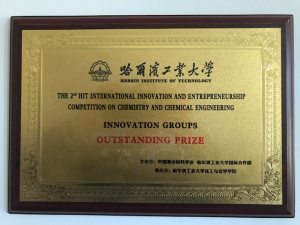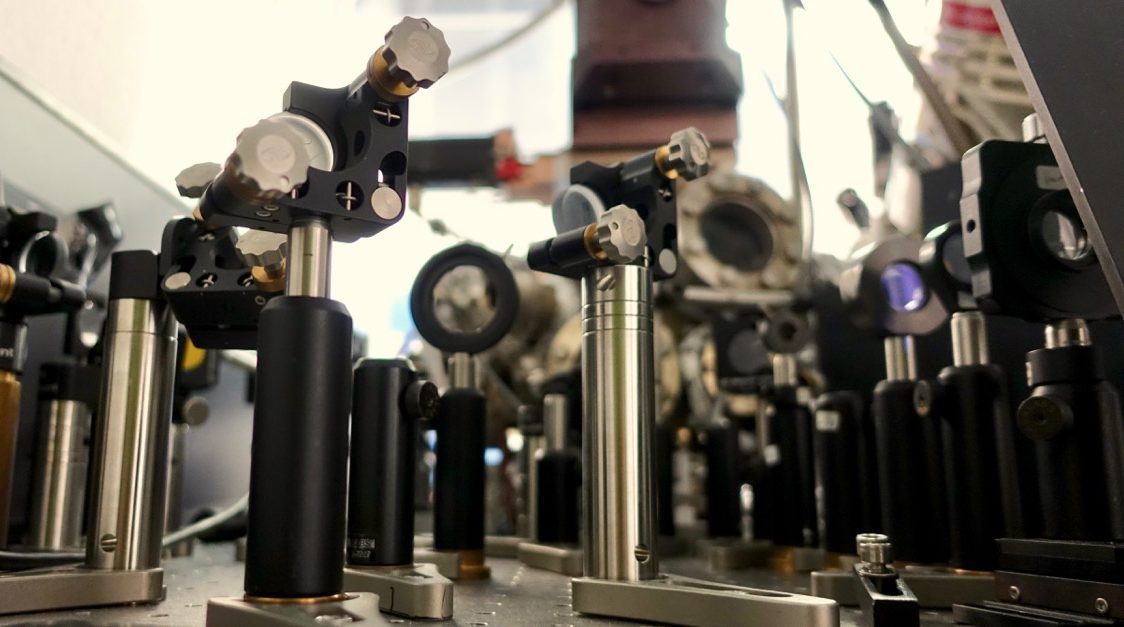Finding an active, inexpensive, stable catalyst for the hydrogen evolution reaction half of water splitting is extremely challenging. For decades Platinum has been the gold standard in such materials but its expense makes widespread application difficult. One promising way to address this limitation is so-called single atom catalysis in which electrodes composed of Pt atoms bound to organic ligands are employed that retain or have enhanced catalytic activity relative to bulk Pt with a fraction of the required mass. In a very nice piece of work driven by Yujin, Can (a visiting student with us last year) and collaborators from Fudan University, the Harbin Institute of Technology, Wuhan University and the University of Science and Technology of China demonstrated a straightforward photochemical reduction method for generating such catalysts with a polyvinylpyrrolidone ligand. See their paper in Angewandte Chemie for more…
Papers…
You might be interested in will definitely be interested in the following papers:
- If you’re interested in building the best possible vibrationally resonant SFG spectrometer you should be reading — and committing to memory 🙂 – the recent effort of Tobias and Martin. This is their Solomonic demonstration that usual trade-offs between noncollinear and collinear geometries need not be made: it is possible to have it all.
- An increasing number of studies have shown that most real (electro)catalytic materials are heterogeneous and that this heterogeneity typically develops under working conditions. One consequence of this state of affairs is that any attempt to understand the mechanism of catalytic reactions requires experimental tools that allow imaging of reactivity. In Gregor’s recent paper at ACS Catalysis he shows how this can be done at a polycrystalline Au electrode for the production of oxygen from water splitting using a wide-field second harmonic microscope. The study — in collaboration with the wonderful folks from Syvie Roke’s group at EPFL — suggests that reactivity is astonishingly local: less that 1 % of the electrode surface area is responsible for the production of all oxygen under moderately oxidizing conditions.
- While we are great believers in the power of nonlinear optical spectroscopy sometimes optical detection is challenging. It turns out, as François and Yujin have shown in a recent preprint for the case of the solvated electron at the Au/water interface, that for those cases electrical detection, following optical stimulus may be just the ticket.
Changes…
In June of this year much of the activities of the group will move to the Faculty of Physics at the University of Duisburg-Essen (where Kramer and Yujin will run a new group). Duisburg (and the neighboring Ruhr metropolitation area) offer a unique combination of world class research in solid state physics, catalysis and solvation science. It will be fun…
Computing the VSFG Spectra of the alpha-Alumina(0001)/Water Interface
In a recent collaborative paper published in the Journal of Chemical Physics Giacomo has shown (with help from Yuki Nagata and Peter Saalfrank) that there is, in fact, more to life than normal mode analysis in understanding vibrational spectra of the Alumina/water interface. Using a scheme based on velocity-velocity autocorrelation functions calculated from ab-initio molecular dynamics trajectories he computes vibrational density of states, infrared and vibrationally resonant SFG spectra of submonolayer coverages of water on the α-Al2O3(0001) surface. Conveniently this approach allows him to directly address the contributions of anharmonicity, mode coupling and thermal motion to our experimental spectra thus strongly enhancing our ability to compare theory and experiment.
New folks…
Dr Guangxian Pei has joined us from the University of Utrecht (where she was a post-doctoral researcher working on transient absorption spectroscopy of Hematite photoanodes in the group of Prof. Bert Weyckhausen)
Watching photocurrents on Pt…
Understanding the mechanism of electrocatalytic reactions is challenging, in part, because relevant processes occur on timescales ranging from femtoseconds to tens of milliseconds. In principle potential perturbation experiments, in which the bias of a working electrode is altered for only femtoseconds and the resulting charge transfer or evolution of interfacial structure probed, are a way of separately interrogating the fastest relevant timescales, in particular the elementary step of charge transfer across the interface. In his paper recently published in ChemElectrochem Gregor demonstrates that it is possible to perturb the potential of single crystal Pt electrodes using femtosecond optical pulses and directly measure the resulting photocurrents. This new observable implies that, at least on Pt at potentials of hydrogen adsorption and evolution ease of charge transfer correlates with particular, goldilocks, structures of interfacial electrolyte and that interestingly the trend in reactivity of Pt single crystal surfaces with respect to H2 formation appears to correlate with ease of partial charge transfer across the Pt-H bond.
From physical chemist to engineer, from Germany to China…
In an unexpected turn of events, Gregor and Tobias have recently demonstrated that they have a rosy future waiting for them as entrepreneurs in chemistry/chemical engineering. But don’t just take my word for it, below is photographic evidence of their victory in The 2nd Harbin Institute of Technology International Innovation and Entrepreneurship Competition on Chemistry and Chemical Engineering garnered during a visit to Harbin, China this summer. Congratulations are, of course, in order.
Some things it would probably be good you thought about if you’d like to build an SFG spectrometer…
Detecting trace species at buried interfaces (e.g. active sites on an operando electrocatalyst) is challenging. While vibrationally resonant sum frequency generation spectroscopy offers, in principle, an attractive approach for characterising such weak interfacial species, in measuring signals from such species and understanding the manner in which their spectral response may be distorted by other, unavoidable, surface and bulk contributions, is extremely challenging. Martin’s new, collinear, time-domain, heterodyned, shot-to-shot referenced, balance-detected SFG spectrometer, debuted recently in a paper in Phys Chem Chem Phys, offers unmatched signal to noise and phase stability. When you absolutely, positively, without a doubt, need to characterise small interfacial signals accept no substitutes.
Clues from simulation towards understanding the reactivity of alpha-alumina towards water
Alumina surfaces are ubiquitous in a wide variety of engineered applications and, despite being relatively uncommon in the environment, are thought to have similar surface chemistry to omnipresent aluminosilicates. In virtually all technological systems, and all environmental, these surfaces interact with water, typically dramatically changing their properties. Thus motivated, decades of study have been devoted to understanding the reactivity of, particularly the most thermodynamically stable, α-Al2O3(0001) surface with water but molecular level understanding has proven surprisingly elusive. In our previous paper on this surface we had, somewhat accidentally, found that employing a supersonic molecular beam dramatically increases the probability of water dissociation on this surface. Sophia’s work simulating the dosing the α-Al2O3(0001) surface with water molecules using a supersonic molecular beam explores the origin of this effect. Among other results she finds, at least at low coverages, that a particular minimum value of translation kinetic energy, significantly enhances dissociation, consistent with prior calculation and theory. But there’s more to the story and it’s great. If you’re at all interested you should just read the paper, just accepted for publication in Journal of Physical Chemistry C.
So about dipole coupling at surfaces…
Several decades of experimental studies have demonstrated that a variety of small polar molecules show coverage dependent changes in the spectral response of their intramolecular vibrations — center frequencies, intensities and line widths shift — when adsorbed on metal surfaces in ultra high vacuum. These trends have been quantitatively understood as the result of dipole/dipole coupling. A similar phenomena, the so-called, electrochemical vibrational stark effect, is well know in electrochemistry: here the center frequencies, intensities and line widths of small polar molecular adsorbates shift on application of bias. However, within the (spectro)electrochemical community such bias dependent changes have been interpreted almost universally to result from changes in adsorbate structure or surface chemistry. In a paper just accepted for publication in Surface Science Gregor and Yujin have shown that dipole/dipole interaction must be quantitatively accounted for in understanding the stark effect at electrochemical interfaces before any insight into adsorbate structure of reactivity can be gleaned.
